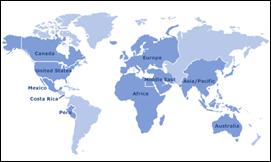
Figure 1: Sample of a figure (legend is below figure, centred, bold)
Author 1 In the cases of full and concise papers for review, omit these lines
Department or Centre
Institution
Author 2 In the cases of full and concise papers for review, omit these lines
Department or Centre
Institution
Place your abstract here ... no more than 150 words … in Times New Roman 10, indented 1.0 cm left and right margins, left aligned. Title, author details and abstract are the only parts of your paper that will appear in the Conference's printed program booklet. Title and abstract are the most critically, vitally important parts of your writing!
Keywords: One line of key or focus terms by which your paper can be indexed.
Body of your paper … use Times New Roman 10 point, left aligned, single spaced. Blank lines before and after headings and paragraphs are to be sized the same as text lines, i.e., 10 point (Times NR).
For paragraphing, use a single blank line between each paragraph, and no indents. Do not use Spacing Before or Spacing After your paragraphs.
Put a blank line before and after the second level heading.
Third level heading in Times New Roman 10 point italic
Do not include a blank line after a third level heading. Use bulleted or numbered lists in preference to third level headings where possible.
[This is a quotation] Use Times New Roman 10 point, left aligned, single spaced, indented 1.0 cm left and right, not italicised, without quote marks, one blank line before and after. Indents may be varied slightly from 1.0 cm to improve the fit. Referencing for the quotation may be given in the running text immediately before the quotation, or may be appended to the end of the quotation. In general, very short quotations using only a few words should be given with quote marks in your running text, whilst only longer quotations using a line or more should be formatted as quotations. (reference)
This is a bulleted list:
• Times New Roman 10 point
• left aligned, single spaced
• no indents except a hanging indent 0.5 cm.
This is an ordered list:
Do not use page breaks or sections breaks. Where necessary or desirable, use several carriage returns to obtain a page break.

Figures must be placed in their correct location in your running text. All figures should be included in your Word file, and not in separate graphic or drawing package format. Labeling should be consistent with the fonts used in the text of your paper, i.e., Times New Roman. Number sequentially, Figure 1, Figure 2, etc. Do not use variations such as Figure 1a, 1b.
Table 1: A sample table (title is above table, centred, bold)Location |
Tables must be placed in their correct, appropriate locations in your running text |
General |
In general use Times New Roman 10 point and other body text specifications for all text within a table and its title, though 9 point may be used as required for narrow columns. Tables should have a title with consecutive numbering (e.g.: Table 1: Title of the table), bolded, using sentence case, centred, and located at the top of the table. For headings within tables use sentence case, with bold and centering optional. |
Format |
Centre each table and select appropriate widths for the table and for each column, using percentages. Use of borders for all cells ('All', with style '1/4 point') is recommended, mainly because borders seem to be helpful for on screen reading. In columns of numbers, use centre or decimal point alignment. |
Explanatory text |
If your table requires explanatory text that is inappropriate for placing in your running text, place it at the bottom of the table, formatted to the same width as the table. |
Other features |
Cell background colouring or shading may be used, but check that grey scale printing (600 dpi) is not impaired, and note that when a web version file is created, the Proceedings editors may use a standard background colour for the first row or other elements of a table. |
Use APA 5th edition style for references. This style prescribes alphabetical order by first author. Use Times New Roman 10 point, left aligned, hanging indent 0.5 cm, with no blank lines. Wherever possible, insert URLs for references. However, do not insert URLs for publications that only offer pay per view, institutional subscriber, or on campus only access to full text. The date of viewing may be omitted for journal and proceedings URLs considered to be of high reliability. The following list provides examples of referencing for the main kinds of publications:
Ally, M. (Ed.) (2009). Mobile learning: Transforming the delivery of education and training. Athabasca University Press (e-book).
http://www.aupress.ca/index.php/books/120155
Gerbic, P. & Maher, M. (2008). Collaborative self-study supporting new technology: The Mahara e-portfolio project. In Hello! Where are you in the landscape of educational technology? Proceedings ascilite Melbourne 2008.
http://www.ascilite.org.au/conferences/melbourne08/procs/gerbic.pdf
Gunn, C. & Peddie, R. (2008). A design-based research approach for eportfolio initiatives. In Hello! Where are you in the landscape of educational technology? Proceedings ascilite Melbourne 2008.
http://www.ascilite.org.au/conferences/melbourne08/procs/gunn.pdf
Herrington, A. (2008). Adult educators’ authentic use of smartphones to create digital teaching resources. In Hello! Where are you in the landscape of educational technology? Proceedings ascilite Melbourne 2008.
http://www.ascilite.org.au/conferences/melbourne08/procs/herrington-a.pdf
Kearsley, G. (2004). Explorations in learning & instruction: The theory into practice database.
http://tip.psychology.org/ [viewed 13 Mar 2009].
Lefoe, G., Philip, R., O'Reilly, M. & Parrish, D. (2009). Sharing quality resources for teaching and learning: A peer review model for the ALTC Exchange in Australia. Australasian Journal of Educational Technology, 25(1), 45-59.
http://www.ascilite.org.au/ajet/ajet25/lefoe.html
Levy, P. (2006). 'Living' theory: A pedagogical framework for process support in networked learning. ALT-J: Research in Learning Technology, 14(3), 225-240. [verified 20 May 2009]
http://repository.alt.ac.uk/138/
Salmon, G. (2000). E-moderating: The key to teaching and learning online.
London: Kogan Page.